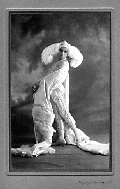
Greg Allen
Veteran trumpeter Herb Alpert says his current tour offers "something completely different" from the Tijuana Brass.
Trumpeter back on tour, up for Grammyby Randy Cordova The Arizona Republic Jan. 24, 2010 12:00 AM
At 74, Herb Alpert has pretty much done it all in the music business, both onstage and behind the scenes.
. Trumpeter Alpert back on tour, up for Grammy
. Herb Alpert's personal hit list
. Lani Hall's career Herb Alpert and Lani Hall
When: 8 p.m. Saturday, Jan. 30.
Where: Scottsdale Center for the Performing Arts, 7380 E. Second St.
Admission: $58.
Details: 480-994-2787, scottsdaleperformingarts.org.
In the '60s, the trumpeter formed the Tijuana Brass, which became hugely popular through such breezy instrumentals as "A Taste of Honey" and "The Lonely Bull." The band wasn't just big: It easily filled arenas and headlined network-TV specials, and Alpert became a household name.
He later disbanded the Brass but kept recording. The hits came less frequently, but the smooth "Rise" (1979) and the 1987 Janet Jackson collaboration "Diamonds" kept his name on the charts.
His recordings alone make him a noteworthy figure. But as the "A" in A&M Records (Jerry Moss is the "M"), he also was a music mogul who helped guide some major acts to fame. A generous man, he formed the Herb Alpert Foundation in the '80s to support arts education. In 2007, the musician and his wife, singer Lani Hall, donated $30 million to UCLA, which led to the creation of the Herb Alpert School of Music.

Scott Gries/Getty Images
Herb Alpert, who was honored by the Rock and Rock Hall of Fame in 2006, plays Saturday, Jan. 30, 2010 in Scottsdale.
Still, he hasn't left music behind. Last year, Alpert and Hall released an engaging collection of standards called "Anything Goes" that is up for a Grammy at next Sunday's awards. The pair is touring to support the disc. Alpert, charming and low-key, called to discuss the show and his contributions to music.
Question: You haven't toured in a while. What's it like back on the road?
Answer: I love playing with my wife, and we've got some excellent musicians behind us. But the packing and the unpacking? That not so much.
Q: How are the crowds?
A: The audiences have been fantastic, which is so great. I was really reluctant to do this in the beginning.
Q: Why?
A: Well, I didn't want people to think this was the Tijuana Brass and I was repeating what I did in the '60s. We do a few bits in tribute of the Tijuana Brass, but this is something completely different.
Q: Have you ever thought of going out and doing the Tijuana Brass hits? Audiences would probably love it.
A: (Laughing) I'm probably just trying to justify my own creativity. The Tijuana Brass was a great run for me. I liked the music I was making in those days. But I'm a little older now. I love jazz, I love improvisation.
Q: Does this confuse your '60s fans?
A: The music is very understandable. We're not doing anything too far out. We've got good songs with good melodies, and they're done in a hopefully original way. That was our pursuit.
Q: Still, do people yell out for "This Guy's in Love With You"?
A: (Laughing) It has not happened yet. Honestly. I have had somebody yell out for me to play "Rise." But for the most part, we're giving them really quality music, and people are accepting it.
Q: That's the neat thing about the album. These are familiar songs presented in a very fresh way, but it's not like they aren't recognizable anymore.
A: That was the goal. Some of these songs and the way we presented them - it is like a totally different way of listening to the lyrics. My wife is very plugged in to wanting to sing a very positive, affirmative lyric. Something like "That Old Black Magic": Slow it down, and that lyric really stands out.
Q: How did you choose the songs?
A: We had a list of about 40 songs, and we just kept whittling down. I'm plugged into the melody. The melody has to be there for me. A terrific lyric with a bad melody is not going to work for me, because I come from an instrumental background. I always wanted the melodies to be memorable.
Q: Who wins out in a musical disagreement: you or Lani?
A: Well, this was a disagreement we had in the early days. It's not all about the lyrics. If you've got a good melody and a great lyric, then we've got a great song. But we're very much in sync with what we're doing and with the reason we wanted to do it.
Q: This album is on Concord Records. Is it weird being on a label where you're not calling the shots?
A: I'm glad I'm out of the music business. It doesn't really exist the way I remember it. It's a totally different way of doing business that I don't relate to. The music industry took a dramatic change when people started listening with their eyes as well as their ears. If you can dance really well on TV and have a beautiful face - that kind of mentality took over. When I auditioned groups for A&M, I listened with my eyes closed.
Q: The Carpenters are a perfect example of being about the sound as opposed to visuals. Visually, they didn't have a lot going on.
A: Exactly. With the Carpenters and Karen Carpenter, it was, "Wow, what a voice!" I closed my eyes listening to them. And it wasn't my cup of tea at all. I didn't go out of my way to listen to that kind of pop, but they had a voice, this extraordinary voice. The music they were making was very real to them. They really felt what they were doing. When that happens with music, it has a great chance of success.
Q: Do you miss that whole aspect of discovering and signing and nurturing acts?
A: No, not at all. I missed it for a few brief moments when we finally signed the agreements to sell A&M, but after that, no. I'm off doing other things. I'm painting, I'm sculpting. I'm still making music.
Q: When you've been playing music as long as you have, do you still have to practice all the time?
A: Oh, man, are you kidding? (Laughing) I practice every day.
Q: When you do it every day, aren't there times you hate it?
A: At times it's been my best friend, and other times it's a dreaded companion. I had a terrible time around 1969, 1970. I was really struggling. With the Tijuana Brass, we would play pretty much like the record, night after night. But it's been a learning experience. Now, I wake up every morning and think, "What am I going to try to accomplish today on the trumpet?"
Q: You've done so much in so many different areas. What do you think your legacy will be?
A: (Laughing) That's a good question. I honestly don't know. . . . I think I'm just trying to be a regular guy who's trying to give back to the community. I've really been blessed beyond my dreams. I made a lot of people happy selling 72 million records. Now I'm trying to do nice things through our foundation
 Steven Lawton/ Getty Images
Steven Lawton/ Getty Images 



































































